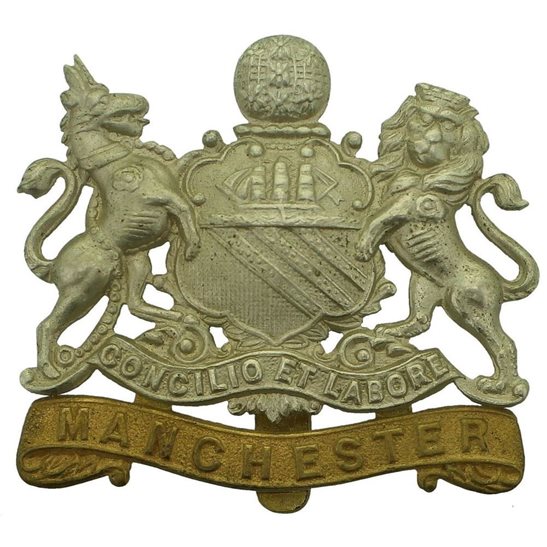Personal Details
Born: In 1897 in Wem, Shropshire.
Family: He was the fifth of eight children born to Henry Ouseley and his wife Betsy. He married Stella Crawley in 1927 in Long Ashton, Somerset. The couple had two children; Michael C born 1928 and Pauline S born 1929.
Residence: Until at least 1911 his family were living in Church Street, Prees, Shropshire. The 1919 Absent Voters` Register for Whitchurch gave an address of 22 Belton Road, Whitchurch for him, which was also the address given for his brother, William. In 1939 he was living at 92 Loxley Road, Stratford -upon- Avon, Warwickshire.
Employment: In 1939 he was a grocery manager.
Died: 1978 in Malvern, Worcestershire, aged 79.
Military Details
Regiment: Manchester Regiment
Rank: Sergeant
Service Number: 202055
Date of Enlistment: Not Known
Date of Discharge: Not Known
Reason for Discharge: Demobilisation
Harry was awarded the Campaign Medals (British War Medal and Victory Medal)

The British War Medal (also known as 'Squeak') was a silver or bronze medal awarded to officers and men of the British and Imperial Forces who either entered a theatre of war or entered service overseas between 5th August 1914 and 11th November 1918 inclusive. This was later extended to services in Russia, Siberia and some other areas in 1919 and 1920. Approximately 6.5 million British War Medals were issued. Approximately 6.4 million of these were the silver versions of this medal. Around 110,000 of a bronze version were issued mainly to Chinese, Maltese and Indian Labour Corps. The front (obv or obverse) of the medal depicts the head of George V. The recipient's service number, rank, name and unit was impressed on the rim.
The Allied Victory Medal (also known as 'Wilfred') was issued by each of the allies. It was decided that each of the allies should each issue their own bronze victory medal with a similar design, similar equivalent wording and identical ribbon. The British medal was designed by W. McMillan. The front depicts a winged classical figure representing victory. Approximately 5.7 million victory medals were issued. Interestingly, eligibility for this medal was more restrictive and not everyone who received the British War Medal ('Squeak') also received the Victory Medal ('Wilfred'). However, in general, all recipients of 'Wilfred' also received 'Squeak' and all recipients of The 1914 Star or The 1914/1915 Star (also known as 'Pip') also received both 'Squeak' and 'Wilfred'. The recipient's service number, rank, name and unit was impressed on the rim.

